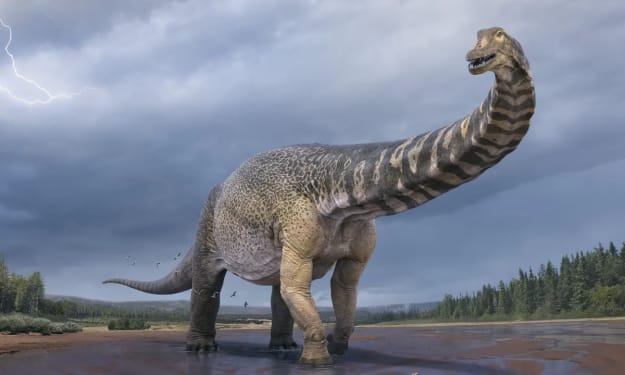The Eye of the Sahara
Myseries in the Desert

In the heart of the Sahara Desert lies the Eye of the Sahara, also known as the Richat Structure—a geological formation that has puzzled scientists and explorers for decades. The causative factors behind this massive circular structure are not of extraterrestrial origin, as once speculated, but rather a result of geological uplift and erosion over millions of years.
The name "Eye of the Sahara" perfectly captures the circular shape of the structure, resembling a giant eye when viewed from space. The local Bedouins refer to it as "Bull's Eye" or "Blue Eye," adding to the mystique of this colossal geological wonder.
Believed to have formed over 100 million years ago, the Eye of the Sahara spans over 25 miles in diameter. Geological uplift and subsequent erosion exposed the layers of rock, creating a series of concentric rings that captivate the imagination of those who gaze upon it.
Initially mistaken for an impact crater, the Eye of the Sahara's true nature was revealed through satellite imagery and geological surveys. In recent years, the site has become a focal point for scientific research, with studies shedding light on the Earth's geological processes and the forces that shaped this mesmerizing structure.
As you traverse the vast expanse of the Sahara Desert, the Eye of the Sahara beckons with its enigmatic allure. The geological masterpiece invites you to ponder the mysteries of time and erosion, where nature's artistic hand has sculpted a marvel that defies the desolate landscape.
The Eye of the Sahara, with its intriguing name and captivating features, stands as a testament to the complex geological history of our planet. The circular structure, resembling a colossal eye when viewed from above, has sparked curiosity and speculation for centuries.
Believed to have originated over 100 million years ago, the Eye of the Sahara is a result of geological uplift and erosion, processes that gradually unveiled the layers of rock and shaped the concentric rings that define its appearance. This massive structure, spanning over 25 miles in diameter, challenges conventional expectations and offers a glimpse into the dynamic forces at play beneath the Earth's surface.
The local Bedouins, with their rich connection to the Sahara, have contributed to the structure's mystique by referring to it as the "Bull's Eye" or "Blue Eye." These names, rooted in local folklore, add layers of cultural significance to this geological wonder, highlighting the deep interplay between nature and human perception.
Initially mistaken for an impact crater due to its circular shape, the Eye of the Sahara has undergone a transformative journey in our understanding. Advances in satellite imagery and comprehensive geological surveys have unveiled its true nature, turning it into a focal point for scientific exploration and research.
In recent years, scientists have delved into the mysteries held by the Eye of the Sahara, using it as a natural laboratory to study geological processes and the Earth's evolution. The structure's concentric rings and exposed rock layers provide valuable insights into the planet's history, offering a tangible record of the forces that have shaped its surface over millions of years.
As you stand in the vastness of the Sahara Desert, the Eye of the Sahara becomes a beacon of exploration and contemplation. Its enigmatic allure prompts reflection on the passage of time, the resilience of geological formations, and the intricate dance between uplift and erosion that sculpts the Earth's canvas.
The Eye of the Sahara is more than a geological marvel; it is a testament to the dynamic and ever-changing nature of our planet. Its colossal size and intricate features invite us to witness the ongoing story of Earth's geological evolution, encouraging a deeper appreciation for the forces that shape our world.
In conclusion, the Eye of the Sahara, with its captivating circular structure, stands as a symbol of geological fascination and scientific discovery. From its misleading identity as an impact crater to its recognition as a result of uplift and erosion, this colossal geological wonder invites us to explore the intersection of natural beauty, cultural symbolism, and scientific inquiry. As we gaze upon the Eye of the Sahara, we are reminded that even in the seemingly barren landscapes of the desert, nature holds secrets and stories that continue to unfold through the ages.





Comments
There are no comments for this story
Be the first to respond and start the conversation.